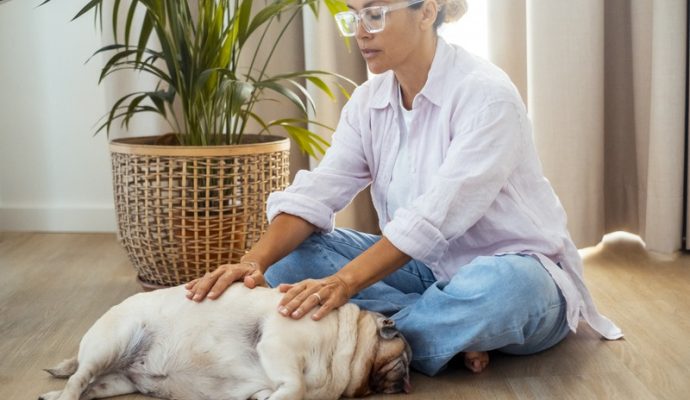Our pets are precious to us, and we want to keep them healthy and happy. Just like humans, pets can experience various eye issues that can affect their quality of life. It’s crucial for pet owners to recognize the early warning signs of eye trouble. This guide goes through common symptoms and what they signify so you can help your pet stay in tip-top shape.
Recognizing Eye Redness or Swelling
The first telltale sign of an eye problem in your pet is redness or swelling. This could be anything from light pink to a vibrant, alarming red. An inflamed eye can cause discomfort and is often a signal that something’s not right. Some key signs to watch for are:
-
Noticeable redness in one or both of the eyes
-
Swelling around the eye
-
Your pet is blinking more than usual or appearing to be in pain
If these symptoms persist, consider seeking help from an expert in areas like an animal eye clinic in Cape Coral, FL. They have the tools and knowledge to pinpoint the issue and offer the necessary treatment.
Is There Discharge in Your Pet’s Eyes?
Seeing some wetness in the corners of your pet’s eyes might not be uncommon, but pay attention if it changes. A discharge that’s yellow or green or has a sticky, goopy quality can mean infection. Pets with unhealthy eye discharge might also try to relieve discomfort by pawing at their eyes. Be on the lookout for:
-
A change from clear tear-like fluid to something thicker or discolored
-
Evidence of discomfort alongside the discharge
-
A bad smell near the eye area
These symptoms should be checked out by a professional, and seeking out a provider of vet ophthalmology in Naples, FL would be a great next step to take.
Cloudiness or Eye Color Changes
Clear eyes are typically a sign of health. Cloudy eyes, or a noticeable change in the color of the eye, is a red flag. This cloudiness could be due to cataracts or increased pressure in the eye, like with glaucoma. If the eye color appears different, it could mean there’s an underlying health issue such as inflammation. Symptoms you may see include:
-
A film or haze that wasn’t there before
-
Any noticeable shift in the color of your pet’s eyes
-
Behavior that suggests your pet can’t see as well as before
When you spot such changes, it’s key to act fast. These issues could potentially lead to procedures carried out by specialists for vet eye surgery in South Florida, FL, especially if left untreated.
Unusual Pupil Sizes
Pets should typically have pupils that are the same size. When the pupils are uneven, it’s a sign known as anisocoria. This can be a clue pointing to various underlying health troubles like nerve damage or head trauma. If your pet has different-sized pupils, they might show the following:
-
One pupil is noticeably larger or smaller than the other
-
Sensitivity to light or difficulty navigating from dark to light spaces
-
Other odd behaviors like clumsiness or confusion
It’s important not to take this lightly and seek professional help immediately to prevent further health complications.
Is Your Pet Rubbing Their Eyes Too Much?
Watch for behavior where your pet incessantly rubs or scratches at their eyes. It’s often a sign of irritation or pain. Too much rubbing can even hurt their eye if there’s something like a splinter or a chemical irritant causing trouble. Unusual signs to observe are:
-
Non-stop or intense scratching around the eyes
-
Additional symptoms like redness or swelling
-
A need to use furniture to scratch their face against
Such symptoms should encourage you to prevent further harm by providing things like an Elizabethan collar and seeking veterinary care to address the root problem.
Problems with Squinting or Eye Closure
If your pet is squinting or closing their eye, it suggests they are likely experiencing some pain or discomfort. It could mean there’s a scratch on the eye’s surface or maybe something more severe, like glaucoma. Keep an eye out for:
-
Difficulty keeping the eye open, especially in normal lighting
-
An increase in blinking or squinting
-
Sudden changes where the pet cannot keep their eye open like they normally do
Fast veterinary assistance is crucial in these cases, as delaying can worsen the condition significantly.
Signs of a Protruding Third Eyelid
Did you know animals have a third eyelid? It’s usually hidden, there to protect their eyes. Should this eyelid become more visible than normal, it’s often a sign of a problem like eye trauma, dehydration, or potentially a serious disease. Look for a white or pink membrane covering part of your pet’s eye where you normally wouldn’t see it, and speak to your vet about it.
Behavioral Changes Linked to Eye Issues
It’s not always just about what we see—behavioral changes can also indicate an eye problem. Your pet might avoid bright places, seem confused in familiar settings, or just not be as playful. These shifts in behavior are important to notice and understand that your pet’s eyes could be the reason. Noticeable behavior changes include:
-
Hesitation when climbing or jumping
-
A new tendency to bump into furniture or walls
-
Lack of interest in playing or activities they used to enjoy
Behavioral shifts like these should prompt a vet visit to assess if eyesight is the issue.
To End
Spotting common eye problems in your pet is vital for their health and comfort. Following these guidelines and looking out for the signs mentioned can be the first step to ensuring your pet’s eye health is looked after. Paying attention to your pet’s eyes and consulting professionals when needed helps keep those furry friends seeing clearly and living happily.




